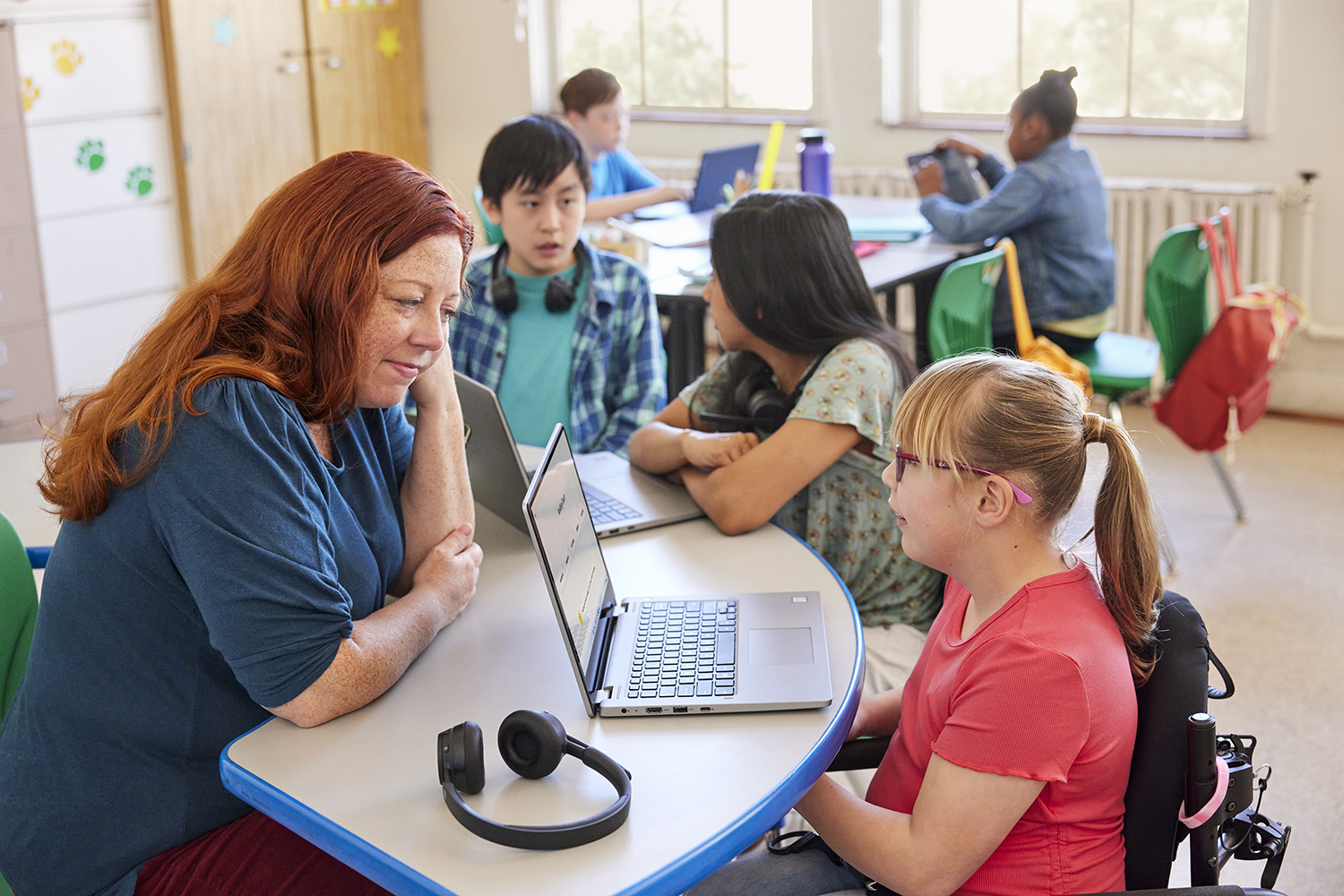Educators have long recognized that for students to be successful, learning—whether in-person, remote, or hybrid—must be tailored to meet the individual needs of each student. Today on Global Accessibility Awareness Day (GAAD), we shine the spotlight on The Loom School in Decatur, Georgia, and their story of empowering all students to find success. Loom’s journey represents just some of the ways that Microsoft tools and resources can support accessibility in any classroom, while ensuring a diverse set of students can engage with learning materials.
When COVID-19 shuttered schools across the U.S. in March 2020, The Loom School—which specializes in individualized learning environments for students with special needs—needed to find a way to transition its personalized services such as music therapy, speech therapy, and social skills to a virtual format. Loom discovered everything they needed was in Microsoft Teams, a single platform where teachers could conduct virtual classes, host one-on-one sessions with students and their parents, and meet with other faculty members.
Searching for a student-centric solution
In assessing the school’s existing technology, Katrina Todd, Loom’s Executive Director who was leading the search for a virtual solution, was pleased to find one that could meet the needs of Loom’s students was closer than she could have imagined. “We already used SharePoint and Outlook for everything,” she said. “But then once the pandemic hit, we started looking at some of the other programs.” With no time to waste, Loom began rolling out Teams.
“There was no blueprint for what Katrina was doing, no blueprint for teaching virtual social skills” said Cynthia Snow, a Loom School parent and Microsoft enterprise manager. “From the perspective of a parent whose child has autism, it was miraculous.”
To effectively roll out Teams, Loom used the same individualized approach that the school’s educators, students, and their families were accustomed to—from introducing and training students to helping parents navigate questions. A week after in-person classes were paused, remote learning began.
Inclusive features and an integrated learning solution
Once students and parents were up to speed, the transition to Teams made routine tasks seamless for Loom’s students and teachers alike. The ease of the platform was paramount. For teachers, organizing and linking to materials was simple. For students, the file pathways made it possible to quickly find and access class materials. Other built-in Teams features like Whiteboard helped recreate in-person classroom activities by giving students the ability to draw and work collaboratively, even in a virtual classroom format. Powered by Surface Pro devices, Loom students and educators were able to recreate the routines and rhythm they needed.
In addition to features like Whiteboard, Teams helps educators follow Loom’s example of personalized learning through features that provide more insight into individual student learning needs. For instance, Reading Progress, supports students in building fluency through independent reading practice, educator review, and insights on progress over time. In addition to skill-based support, other Teams apps offer insight into student well-being and emotional needs. The Reflect app, for example, enables teachers to poll students about their feelings and glean insights to further support students’ social and emotional learning.
Even as Loom returns to in-person services, it has found value in continuing to use Teams-powered solutions. Loom’s behavioral analyst supervisors, for instance, are using Teams to provide instant feedback and support to a behavioral technician visiting a child in their home. This creates a less disruptive—and more effective—visit than if two providers were in the room.
The overall transition may have taken a village, but “it’s made us a better support organization,” said Katrina, who sees potential for a virtual education model for The Loom School moving forward. Whether students need to access their teachers, social groups, Loom services, or the virtual classroom, they can do so without missing a beat.
The Loom School is just one example of how inclusive, accessible learning environments can inspire confidence in all students and help unlock their full potential. To learn more about the tools, technology, and resources available, get started with Teams for free and check out the Accessibility Guide for Educators. Together, we can give all learners the ability to reach their goals!










